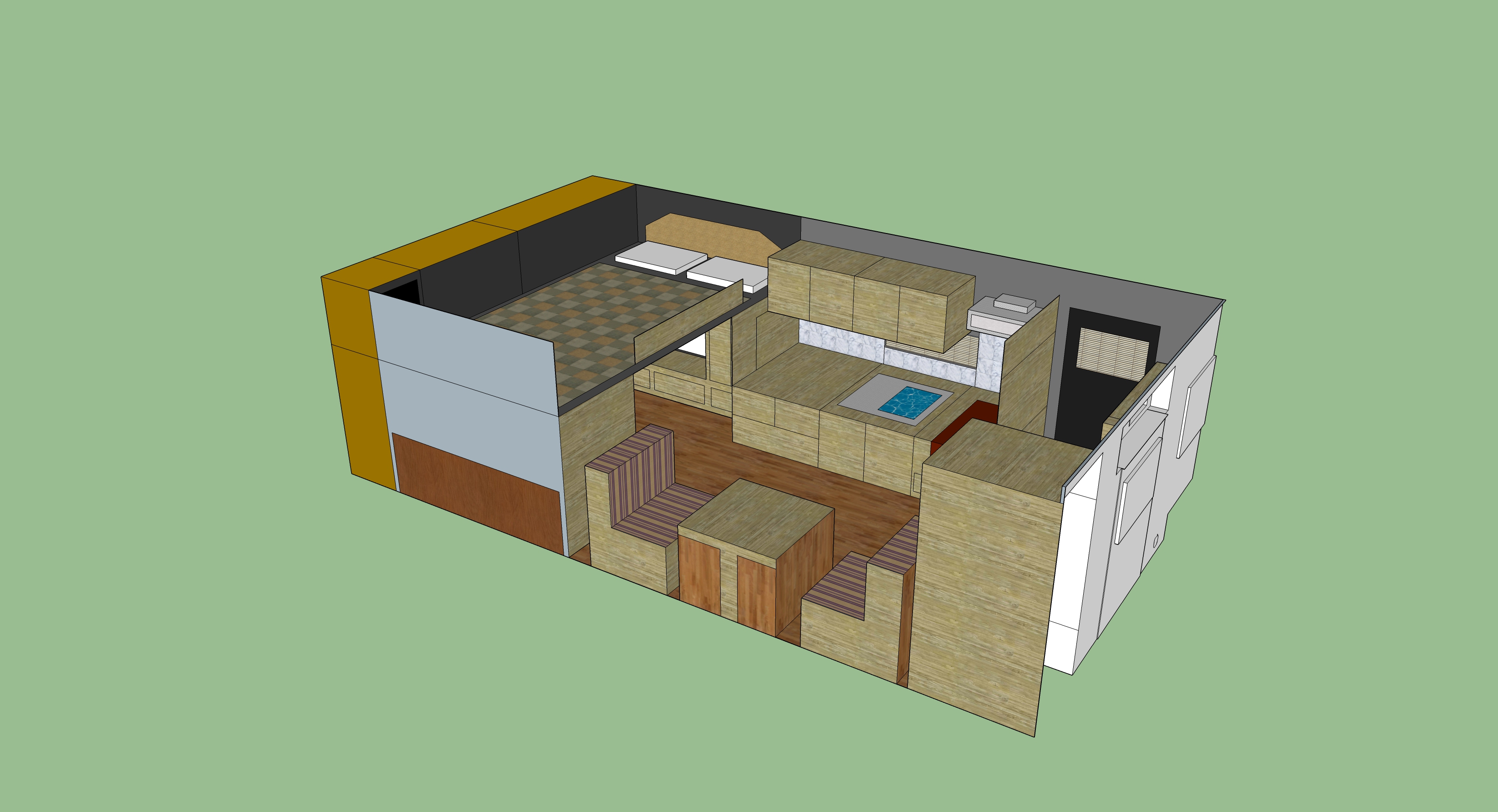Tip Up Box Plans - A tip-up, also known as an ice fishing trap, is a way for anglers to make several holes in the ice at the same time. Instead of sitting in a hole and waiting for a bite, the ice fishing trap has a flag that lets you know when a fish is approaching. When your line is low, the flag falls to the ground. But when you get a bite, the flags on the line stand still and beckon you to come back for your next meal.
There are many tips available for online shopping. Many people allow you to connect all fishing rods and other warning signals like alarms. But making a real ice fishing trap is really easy. All it takes is a flag, or something light, two poles, fishing line, and some thin rope or twine. Their simplicity makes them a great life tool. In addition, since you can use many of them at once, it increases your chances of having dinner.
Tip Up Box Plans
/cdn.vox-cdn.com/uploads/chorus_asset/file/22429487/3tiered_planter_House1.jpg)
2: Make sure your upper pole is not thick or heavy, otherwise the small fish will not be able to lift your flag.
My Box Van Layout
5: Tie the top pole to the bottom pole with string or rope using a whip or diagonal. Leave enough space at the end of the rod to attach the fishing line.
Like this illustrated guide? Then you'll love our book The Illustrated Art of Manliness! Pick up a copy on Amazon.
Skill of the Week: Changing Tire Skill of the Week: Shining Shoe Skill of the Week: Off the Door The Best Way to Introduce Snow Small boxes like these allow you to show off the details of the wood. It can be an unusual color, a very fine texture, or a pleasing grain. You can use something unusual or use scraps from another project. I made the box in this article from mahogany scraps, which are very small works, but they are better for the fireplace.
Download! Consider bird's eye maple, bird's eye maple, or other species you've never heard of. Wood-Database.com is an excellent source for images and performance properties of various types of wood.
Amazon Plans $1b Theatrical Movie Push: Cinema Stocks Rise
Try to cut all your parts in a row from the same board. When assembling your box—especially one with rough corners—the grain will look awkward if it's wrapped around the corners.
Cut cardboard windows to the size of each part of your box. Place windows on your boards to find the best grain for each area.
This box is made from 1/2-inch thick material. Most home centers take 1/2-in. Boards of other common species such as oak and poplar. If you want more options and don't own a planner, shop online (rockler.com is a good option). Since the ends (B and C) are short, leave each end and side (A) as one board for now. Leave the extra length and cut them free after milling the groove.

Top and bottom grinding. Both grooves are parallel to their edges. Prepare the soil to fit the groove. Mark the outer face of the side/end board. Place the other side up when you cut the groove. The easiest way to cut these grooves is with a dado set. Make a pass for the bottom groove, turn the board, and make a pass for the top. To cut these grooves with a normal blade, you need to make several passes to get the right measurements.
Ultimate Guide To Meal Delivery Services 2021: Best Meal Delivery Kits
Cut out the bottom dimension (D) now, and turn it to the right thickness. It should be thin enough to fit the hole easily without being loose.
Connect a long straight bar to your meter. If you have two weights, attach the block to both of them so they look like a sled. Turn the water to 45 degrees, make a column on a piece of scrap, and then check that the angle is right and the cut is straight. Make the necessary adjustments, then cut miters on the sides and ends. Rip the short end to the long end. Cut the cover (E) and base to final size. Dry-assemble the box using tape to hold the corners together for proper measurements. Measure the inside width and add 7/16 inches. Measure the inside length of the box and add 7/16 inch to the bottom length. The length of the lid is the inside size and 3/16 inch.
Sanding the inside of the box after assembly is difficult, so sand all interior surfaces to 180-grit before assembly. Line up the sides of the box and glue the miters. Fold the box together and slide it down into the groove, spread the tape over the corners. Reposition each of the tapes and stretch them to hold the corners well. Wipe off any excess glue in the box with a damp cloth. This will raise the grain a bit, but after the glue dries you will be able to trim those areas. Allow the glue to dry for at least an hour.
When the box is dry, turn the dado setting back on. Move the bali board to your cutting block to slide the block over the blade. Match the two edges and one end of the lid and test the fit on the cut piece. The end of the lid should be about 1/16 inch beyond the inside width of the box.
How To Build A Squirrel House: 14 Steps (with Pictures)
Adjust the cover as needed so it slides well in the holes, then attach the end of the miter cover with adhesive tape. Slide the cover into its slots. If it's too tight, sand the split edges with a sandpaper until the cover slides home smoothly. When you are satisfied with the fit, cut and glue the end of the lid (F).
Insert and cut kerfs for corner buttons. The painter's tape indicates the correct stop point for the end of the kerf. Angle keys (G) are optional. They are more decorated, but they give strength. If you choose to use them, place them in the corners of the box as you like. Place the box in a vise and use the handle to make one cut along each row.
I wanted my buttons to be a little thicker than my hand kerfs, so I made the kerfs wider with a fine-toothed saw blade.
He tore the key from the outer edge of the wide screen. You may need to try a few times to get the thickness right. The key should be thick enough to slide easily without turning in the kerf; If you insist, it is very thick. Use fine-toothed scissors or a utility knife to cut the stock into small pieces long enough to fill the kerfs.
Architectural Drawings: 8 Coastal Homes With Open Floor Plans
Cut the buttons with a fine toothed or utility knife. Apply glue on each button, then pour them into the kerfs (Image 10). Let them dry for at least an hour, then sand them. Finish the entire box to 180-grit.
Trim the water taps, then sand and finish the box. To get a rich satin sheen on my box, I applied three coats of tung oil, let each coat dry overnight and sanded 400 light between coats. Finally, I used paste wax and "0000" steel wool. Apply the wax immediately for a satin finish, or let it dry first for a glossy finish. If the cover does not slide freely after completion, lightly sand down the edges. Rubbing the edges with a candle also helps.
Everyone loves a good mystery. To add this hidden lock to your box, you'll need a 16d nail and a 1/4-in. Rare earth magnets (available at local centers for less than $1 each). It is recommended to press the button tightly.
Make a recess in the bottom edge of the end of the box with a Forstner or brad point bit so the bottom of the recess is flat.
Auto Fisherman Hook Setter
Drill the hole for the 16d nail with the short end, aligned to one side of the recess.
Cut the nail head and hold it in a vise that sticks out about 3/8 inch. Hammer the nail until the foot is soft, creating a "foot."
Slide the cover to mark the spot and pierce it through the nail hole. Remove the cover with the tape flag as a stop and pierce the middle. Cut the nail lengthwise. It should contact the magnet and go into the hole in the lid. File any sharp edges.

To install the lock, slide the nail through the hole and turn the leg toward the magnet. To remove it, flip the leg off the magnet and slide the nail out.
How To Make An Ice Fishing Tip Up
We no longer support IE (Internet Explorer) as we strive to provide a better site experience for browsers that support the latest web standards and security practices. Donate
Hot box tip up, heated tip up box, lakewood tip up box, bite me box tip up plans, ice fishing tip up plans, homemade tip up plans, tip trailer plans, bite me box tip up, tip top lofts floor plans, tip up box, tip down plans, tip up storage box

0 Comments